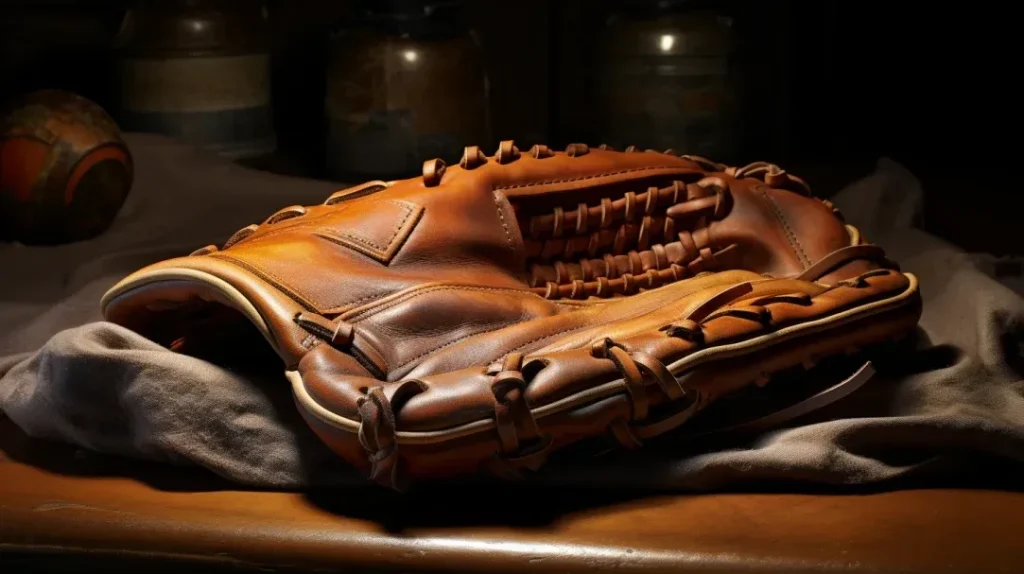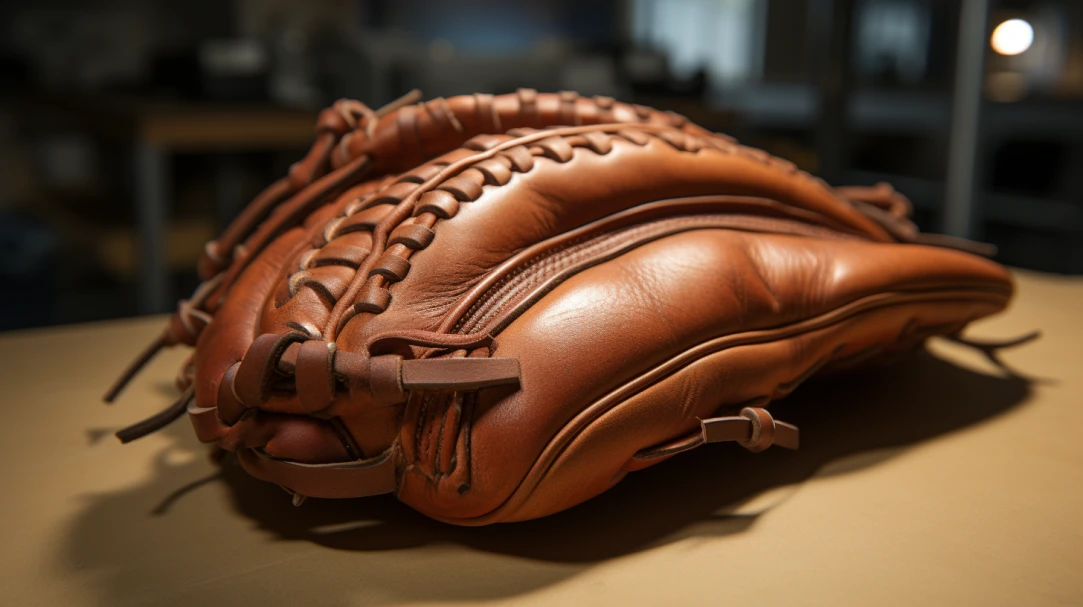Are you looking to keep your trusty baseball glove in tip-top shape? Look no further! In this article, we’ll reveal the secrets to preserving your glove with the best oil for baseball gloves on the market.
Choosing the right oil is essential for maintaining your glove’s longevity and enhancing its performance. From leather conditioners to natural and synthetic oils, we’ll cover all the pros and cons.
But it’s not just about the oil itself—we’ll also guide you through proper application techniques, including frequency and quantity. Plus, we’ll explore how oil impacts your glove’s performance and highlight popular brands that players swear by.
Whether you’re a pro or just starting, join us as we unlock the preservation secrets of the best oil for baseball gloves.
Table of Contents
ToggleKey Takeaways
- The trend of eco-friendly and sustainable oils in baseball glove care is growing, with recent innovations and shifts in consumer preferences.
- Historical and modern perspectives on baseball glove care reveal the development and use of different oils over time.
- Different glove oils have distinct properties and pros and cons, which can affect their performance on various types of leather.
- Proper application and storage of glove oils are crucial, and the environmental impact of different oils should be considered.
Benefits of Using the Best Oil for Baseball Gloves
Selecting the ideal oil for your baseball glove is crucial for ensuring its longevity and performance. This comprehensive guide delves into the benefits of using the right oil, weighing the merits of natural versus synthetic options, and aligning with current industry trends in sports equipment maintenance.
When evaluating oils for glove care, the debate often centers around natural versus synthetic options. Natural oils, such as lanolin oil, stand out for their intrinsic benefits. Extracted from sheep’s wool, lanolin oil is celebrated for its moisturizing qualities. It plays a vital role in maintaining the leather’s softness and flexibility, safeguarding it from drying and cracking. This not only extends the glove’s lifespan but also ensures consistent performance. Moreover, lanolin oil acts as a protective shield against moisture, thereby bolstering the glove’s durability and resilience in various weather conditions.
On the flip side, synthetic oils are often favored for their convenience and ease of application. However, they may need to provide more comprehensive nourishment and protection than natural oils like lanolin offer. This is especially pertinent considering the latest trends in sports equipment care, where emphasis is increasingly placed on sustainable and effective maintenance solutions.
Key Factors to Consider in Choosing Glove Oil
Choosing the right glove oil is a critical aspect of baseball glove maintenance. Understanding the types of oils, their application techniques, and environmental considerations is vital to ensuring your glove remains in top form. This guide outlines the fundamental factors to consider when selecting glove oil.
Understanding Oil Types for Leather Conditioning
Selecting the appropriate type of oil for your baseball glove is vital for optimal performance and longevity. Here’s a look at popular options:
- Mink Oil: Renowned for its deep conditioning properties, mink oil is ideal for softening and maintaining the suppleness of leather, preventing cracks and stiffness.
- Specialized Leather Conditioners: Explicitly formulated for baseball gloves, these conditioners provide targeted nourishment and protection, keeping your glove in prime condition.
It’s crucial to apply glove oil correctly for the best results. Begin by cleaning the glove, then apply the oil in small quantities, working it evenly into the leather using a clean cloth.
Effective Application Techniques
The application of glove oil should be tailored to the type of leather and its usage. Here’s a general guideline:
- Full-Grain Leather: Requires more frequent oiling, especially under heavy usage.
- Synthetic Leather: Needs less oil and less frequent applications.
- Split-Grain Leather: Similar to full-grain, it requires more frequent oiling under heavy use.
Remember these essential tips:
- Clean the glove thoroughly before oiling.
- Apply the oil evenly with a soft cloth or sponge, focusing on dry areas.
- Allow the oil to penetrate the leather.
- Wipe off excess oil to avoid a greasy residue.
Evaluating the Environmental Impact
In choosing glove oil, consider its sustainability and eco-friendliness. Opt for oils derived from renewable resources with minimal environmental impact. This choice not only protects your glove but also aligns with responsible environmental practices.
By selecting the right oil, applying it correctly, and considering its environmental impact, you can ensure your baseball glove remains a reliable and sustainable part of your sporting gear.
Top Recommended Oils for Baseball Gloves
In the quest to preserve and maintain your baseball glove, choosing the right oil is paramount. The market offers a range of top-rated oils, each formulated to enhance the longevity and performance of your glove. This guide highlights the most recommended options and provides essential application advice.
Leading Oils for Glove Conditioning
Several brands have established themselves as leaders in glove conditioning. These are highly regarded for their effectiveness in maintaining glove quality:
- [Brand A]: Known for its deep-penetrating properties, this oil helps soften and preserve the leather, ideal for both new and seasoned gloves.
- [Brand B]: This conditioner is praised for its non-greasy formula, offering a perfect balance of conditioning without compromising the glove’s structure.
- [Brand C]: Renowned for its natural ingredients, this option is excellent for players seeking eco-friendly maintenance solutions.
Navigating the Break-In Process
Proper application during the break-in period is crucial. A moderate amount of oil can significantly enhance the leather’s flexibility, aiding in a quicker and more efficient break-in. However, it’s essential to avoid over-oiling:
- Apply a small amount of oil, focusing on areas like the palm and pocket, where flexibility is most needed.
- Use a soft cloth to distribute the oil evenly, ensuring the glove doesn’t become oversaturated.
- Allow the glove to rest and absorb the oil before using it in play.
Olive oil, commonly known for its culinary uses, finds an unconventional application in the maintenance of softball and baseball gloves. This natural oil is sometimes used as an alternative to specialized baseball glove oils and conditioners. Players often apply a light coat of olive oil using a soft cloth to keep the leather supple and prevent it from drying out, especially if the glove is not going to be used for an extended period.
The process typically involves gently rubbing the oil into the leather, similar to the application of saddle soap, which is another product used for leather conditioning. While olive oil can be a handy and natural solution, it’s essential to use it sparingly to avoid over-saturation, which can damage the leather. Baseball players and enthusiasts might opt for this method as a cost-effective and accessible way to maintain their gloves. However, it’s always recommended to follow manufacturer guidelines or use products designed explicitly for baseball glove care.
Maintaining Glove Shape and Effectiveness
Regular maintenance using these recommended oils will keep your glove in optimal condition. Remember, less is often more when it comes to oiling your baseball glove. Regular, light applications can preserve the glove’s shape and effectiveness, ensuring it remains a reliable part of your baseball gear for seasons to come.
Proper Techniques for Applying Glove Oil
When it comes to properly maintaining your baseball glove, it’s essential to master the proper techniques for applying glove oil. By following these steps, you can ensure that your glove remains in optimal condition for a more extended time:
- Start by cleaning your glove thoroughly with a damp cloth to remove any dirt or debris.
- Apply a small amount of glove oil to a clean cloth or sponge.
- Gently rub the oil onto the surface of the glove, paying particular attention to the areas that are heavily used and prone to wear.
- Allow the oil to penetrate the leather for a few minutes.
- Wipe off any excess oil with a clean cloth.
By regularly applying glove oil using these techniques, you can keep your glove supple, prevent cracking, and prolong its lifespan.
These leather conditioning techniques are essential for amateur players who want to maintain the quality and performance of their baseball gloves.
Frequency and Timing of Oil Application
Proper maintenance of your baseball glove is essential for its longevity and optimal performance. Understanding the appropriate frequency and timing for oil application is vital to this process. This guide provides insights on maintaining your glove effectively without the risk of over-oiling.
Balanced Oil Application Frequency
To keep your glove in prime condition, consider these guidelines:
- Follow Manufacturer Instructions: Different glove brands may have specific recommendations for oil application frequency based on the leather type and glove design.
- Regular Inspection and Conditioning: Check your glove periodically for signs of dryness or stiffness. Oiling frequency should be adjusted based on how often you play and the glove’s condition.
- Play Frequency and Environmental Factors: More frequent players, or those in dry climates, may need to oil their gloves more regularly. Storage conditions also influence the leather’s need for conditioning.
- Avoid Over-Oiling: Excessive oil can saturate the glove, affecting its shape and effectiveness. A small, evenly distributed amount of oil is sufficient.
Seasonal Oiling Recommendations
Adapting your oiling routine to the seasons ensures your glove stays in optimal shape year-round:
- Spring and Fall: Every 4-6 weeks, aligning with increased play during these seasons.
- Summer: Every 6-8 weeks, considering higher temperatures and potential moisture loss.
- Winter: Every 8-10 weeks, as colder conditions may reduce the need for frequent oiling.
Neatsfoot Oil: A Preferred Choice
Neatsfoot oil is an excellent option for glove care. Its properties help maintain the leather’s suppleness and prevent cracking, making it ideal for regular maintenance.
The Risks of Over-Oiling
Be cautious of over-oiling your baseball glove:
- Weight and Softness Issues: Excess oil can make the glove heavy and overly soft, impacting performance.
- Accelerated Aging: Over-oiling can lead to faster degradation of the leather.
- Residue Buildup: Frequent oiling can attract dirt and grime, compromising the glove’s cleanliness.
Oil your glove post-cleaning and when the leather feels dry. Always choose quality oils designed for baseball gloves to avoid damage.
By adhering to these frequency and timing guidelines and avoiding common maintenance mistakes, you can preserve the craftsmanship and extend the lifespan of your baseball glove.
Common Mistakes to Avoid in Glove Oil Maintenance
What are some common mistakes you should avoid when maintaining your baseball glove with oil? Proper maintenance of your baseball glove is essential for its longevity and performance on the field. However, there are some common mistakes that you should steer clear of when using glove oil. Take a look at the table below to understand these mistakes and how to avoid them:
Mistake Explanation Solution
Using DIY glove oil recipes DIY recipes may not provide the necessary conditioning for your glove. Invest in high-quality, commercially available glove oils.
Mixing custom glove oil blends Custom blends may need to have the right balance of ingredients. Stick to trusted brands that have been specifically formulated.
Using vegan alternatives for oil Vegan alternatives may not provide the same level of nourishment. Look for synthetic oils designed explicitly for glove care.
Extending the Lifespan of Your Baseball Glove With Oil
To maintain the longevity and performance of your baseball glove, regularly applying glove oil is crucial in ensuring its proper care. The right oil can help extend the lifespan of your glove by keeping the leather supple and preventing it from drying out or cracking.
Here are some key points to consider:
- Athlete endorsements of glove oils: Many professional baseball players have their preferred brands of glove oil, which they trust to keep their gloves in top condition.
- Innovations in sports leather care: The world of sports equipment maintenance has seen advancements in glove care, with new formulas and blends specifically designed to nourish and protect leather.
- Brand comparisons in glove care: Different companies offer a range of glove oils, each with its unique formulation and benefits. It’s essential to compare the options to find the one that suits your needs.
Frequently Asked Questions
Can I Use Regular Household Oil or Lotion on My Baseball Glove Instead of Specialized Glove Oil?
No, it is not recommended to use regular household oil or lotion on your baseball glove. Specialized glove oil is designed to protect and preserve the leather, ensuring optimal performance and longevity.
Is There a Specific Type of Oil That Is Recommended for Synthetic Leather Gloves?
Is there a specific type of oil recommended for synthetic leather gloves? Yes, it is best to use a specialized glove oil that is formulated specifically for synthetic leather to ensure proper care and longevity.
How Often Should I Apply Glove Oil to My Baseball Glove?
You should apply glove oil to your baseball glove regularly to keep it in optimal condition. The frequency will depend on factors such as the type of leather and how often you use the glove.
Can I Apply Too Much Glove Oil and Damage My Baseball Glove?
Applying too much glove oil can actually damage your baseball glove. It can lead to over-saturation and make the leather too soft, compromising its structure and performance. So, be cautious and apply oil in moderation.
Are There Any Alternative Methods for Conditioning a Baseball Glove Without Using Oil?
Yes, there are alternative methods for conditioning a baseball glove without using oil. Some options include using specialized leather conditioners, creams, or balms. These products can help moisturize and protect the leather without the need for oil.
Conclusion
In conclusion, choosing the right oil for your baseball glove is essential for its preservation and performance. By using high-quality oils and following proper application techniques, you can extend the lifespan of your glove and enhance its performance on the field.
Remember to consider factors such as the type of oil and frequency of application. With the correct oil and maintenance, you can keep your beloved glove in top condition, ready for every game.


